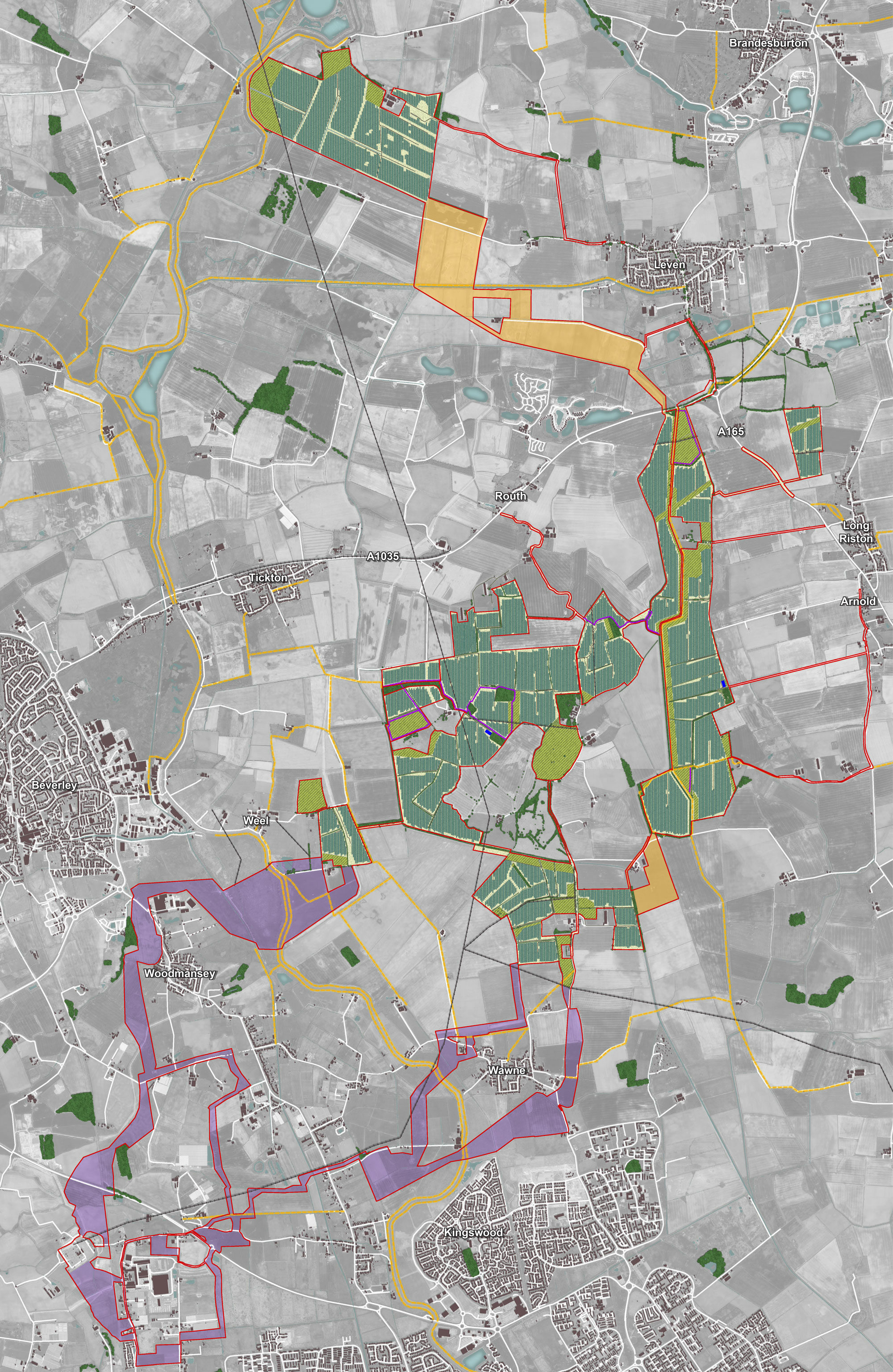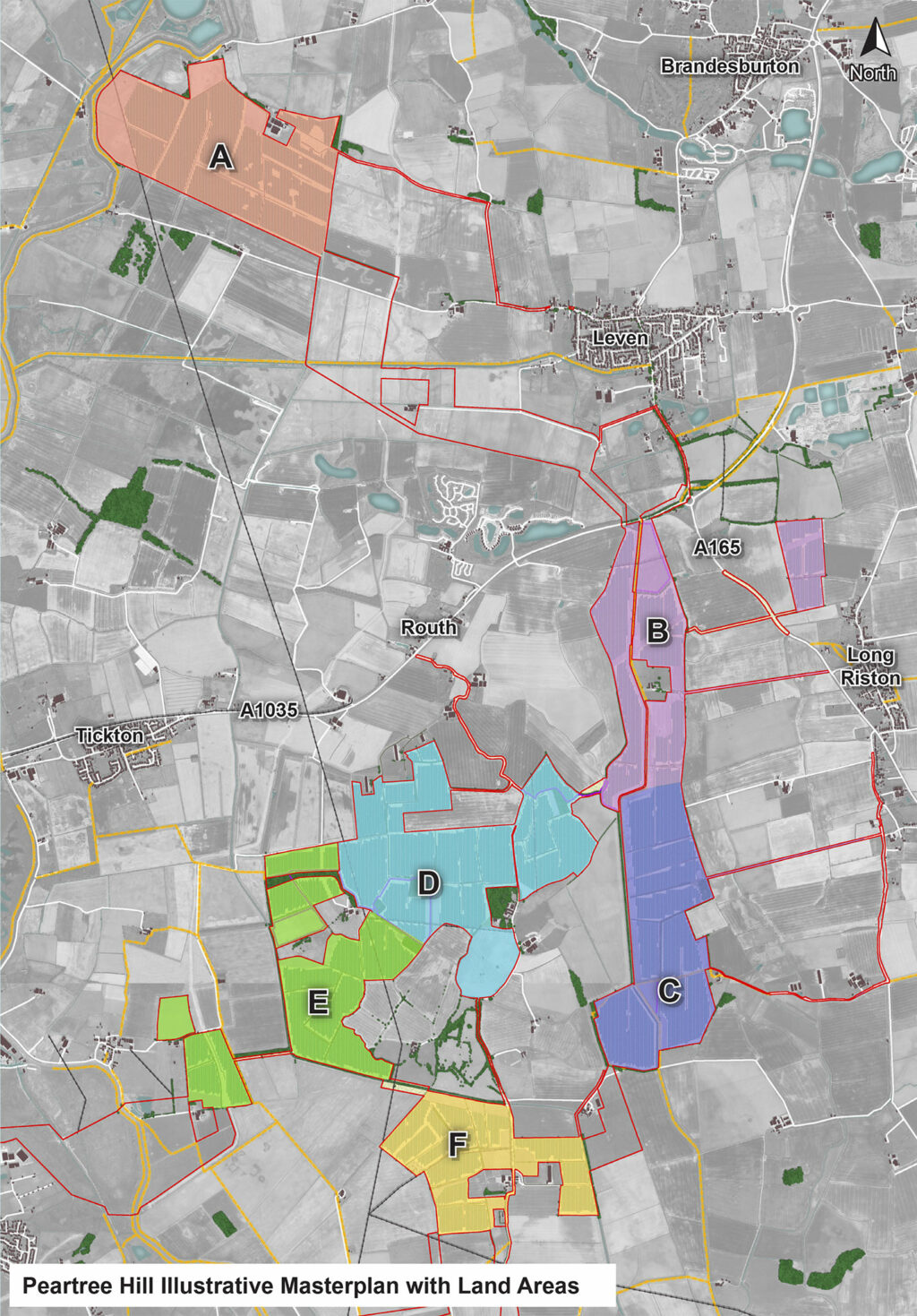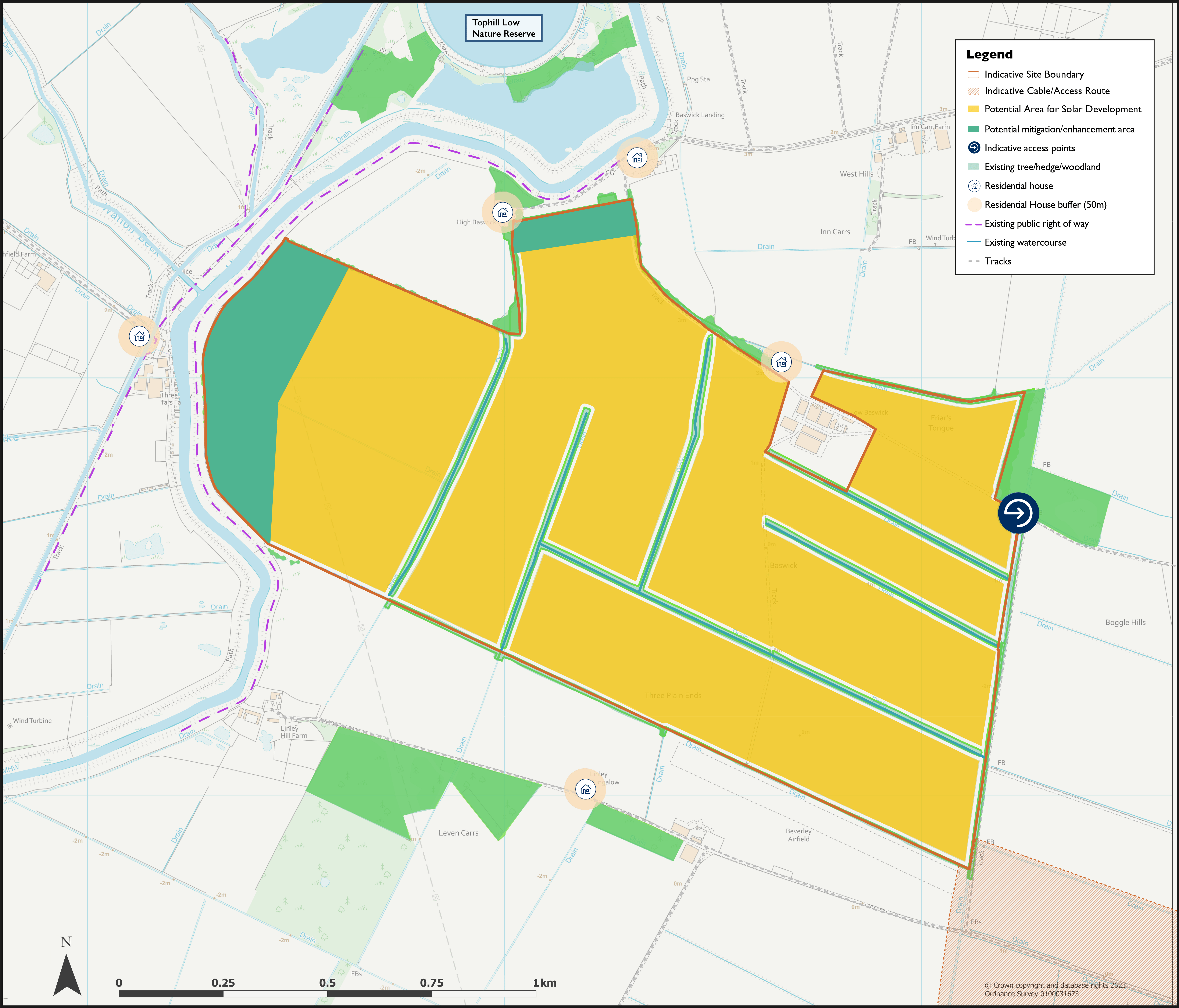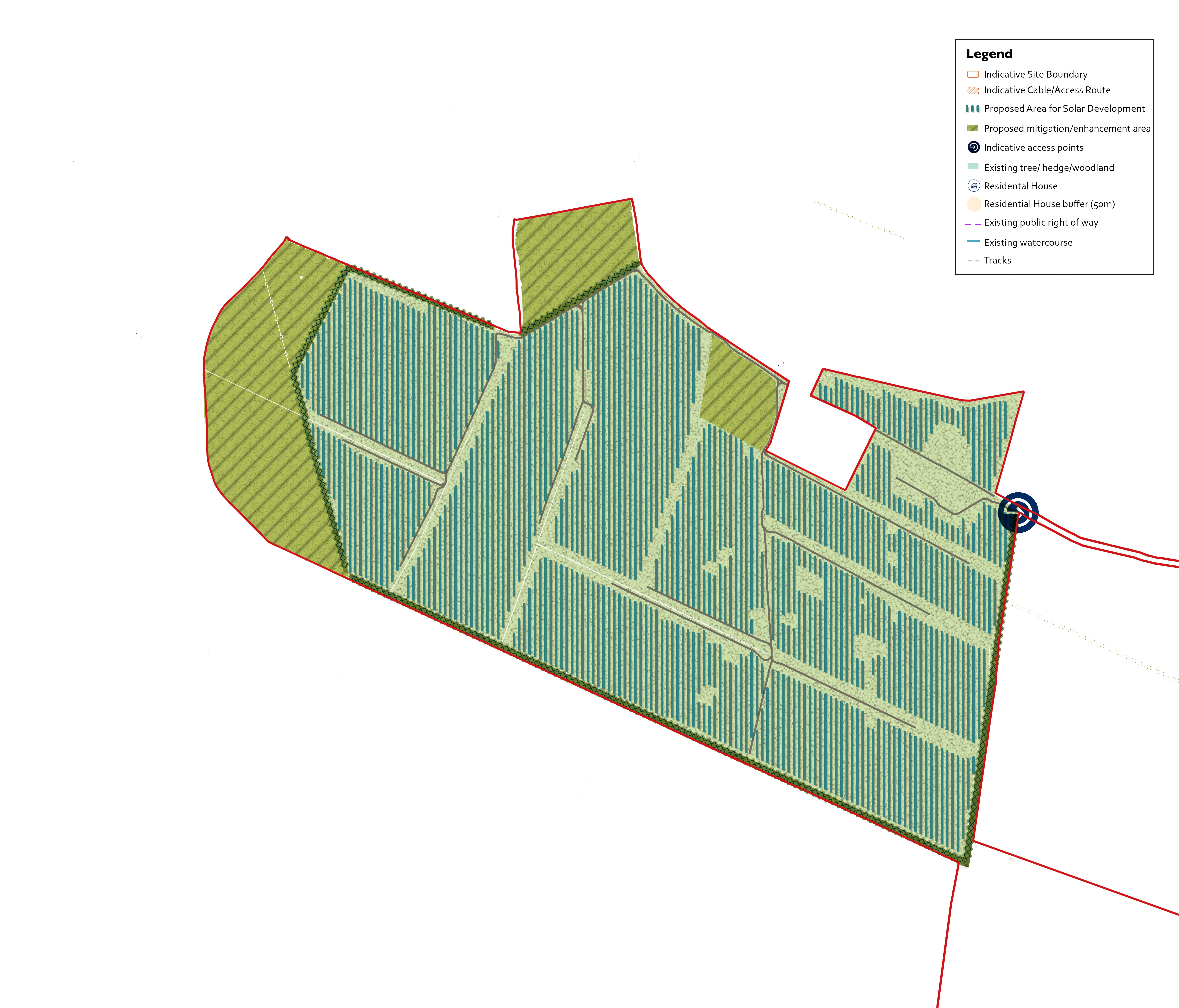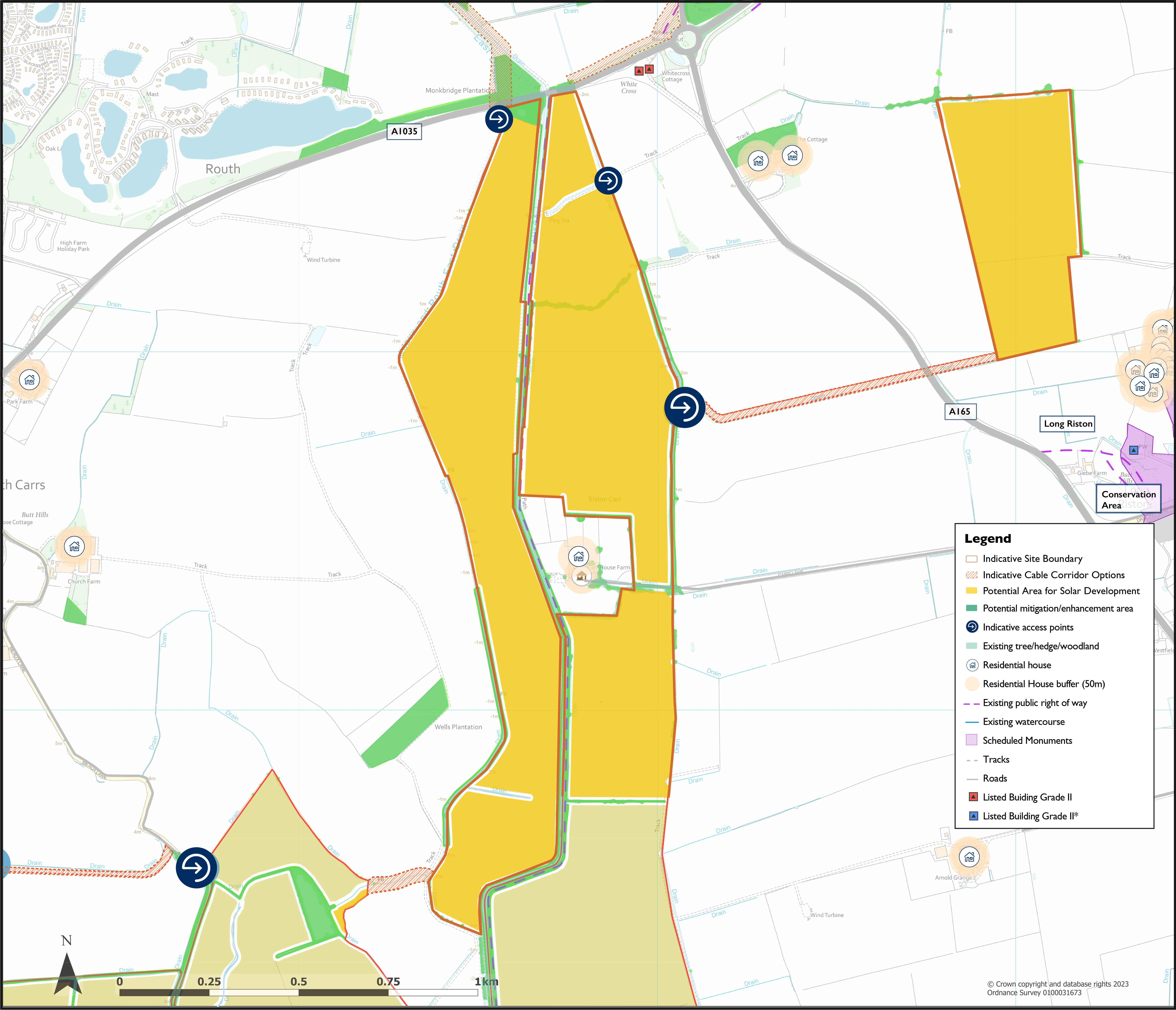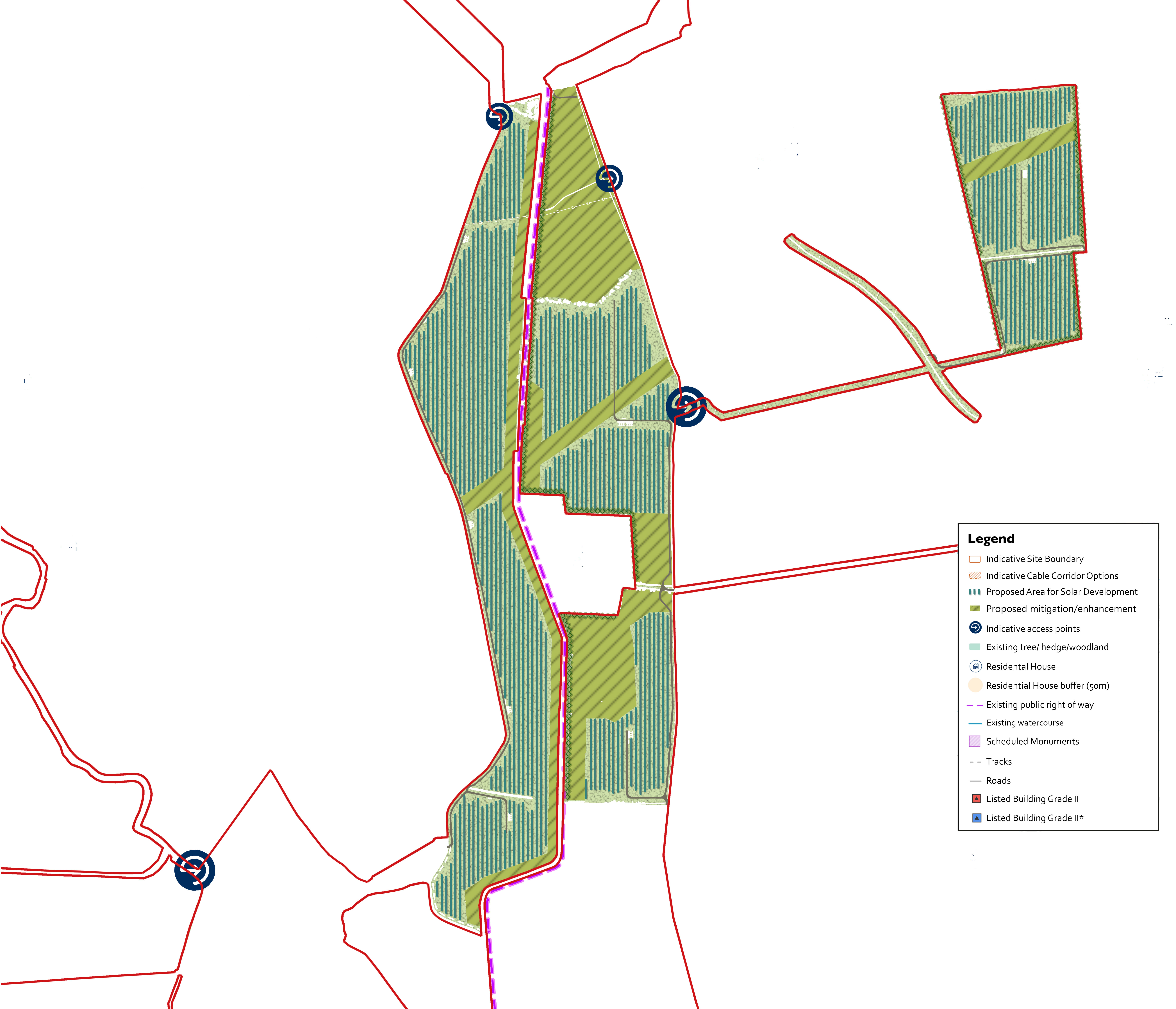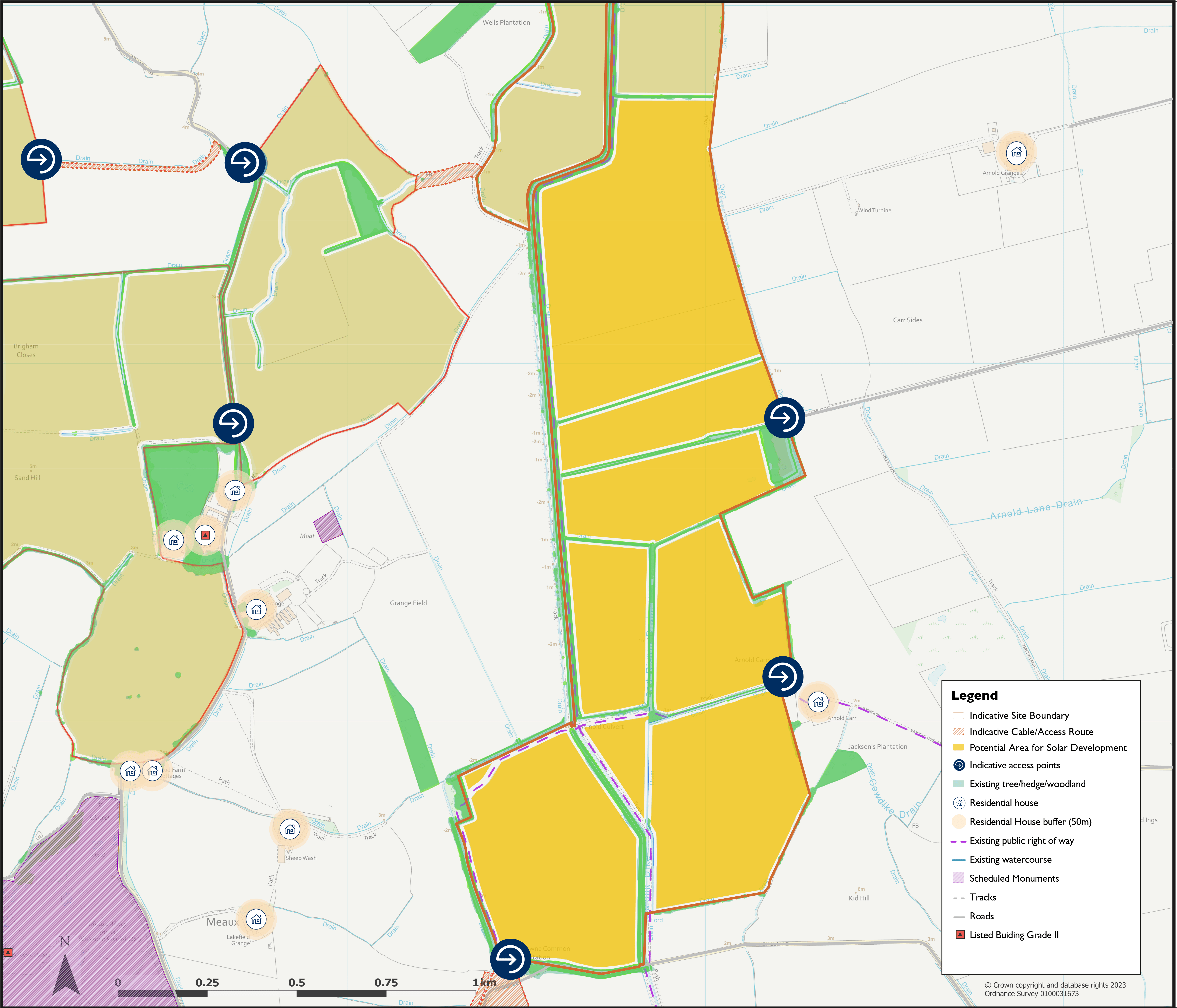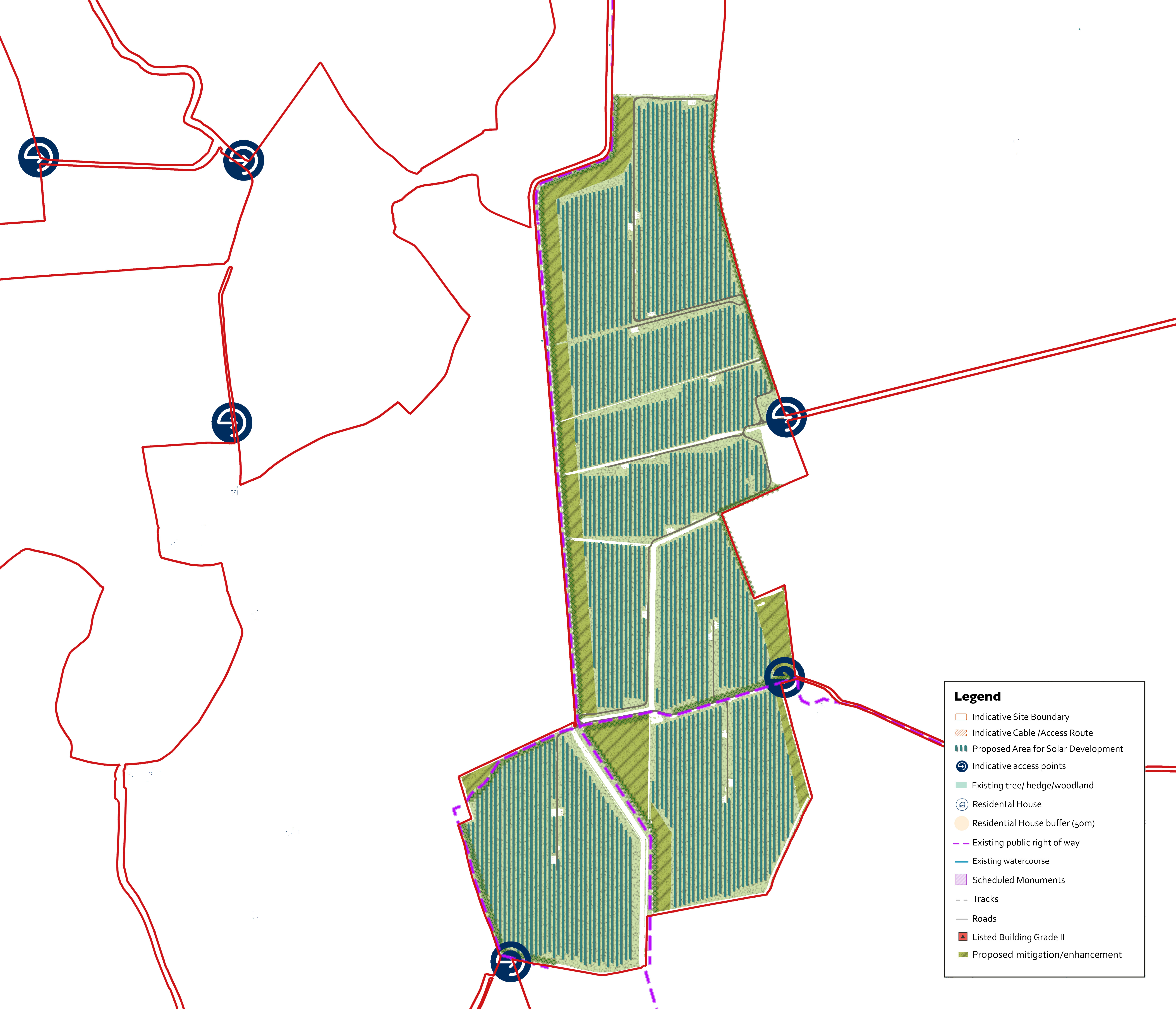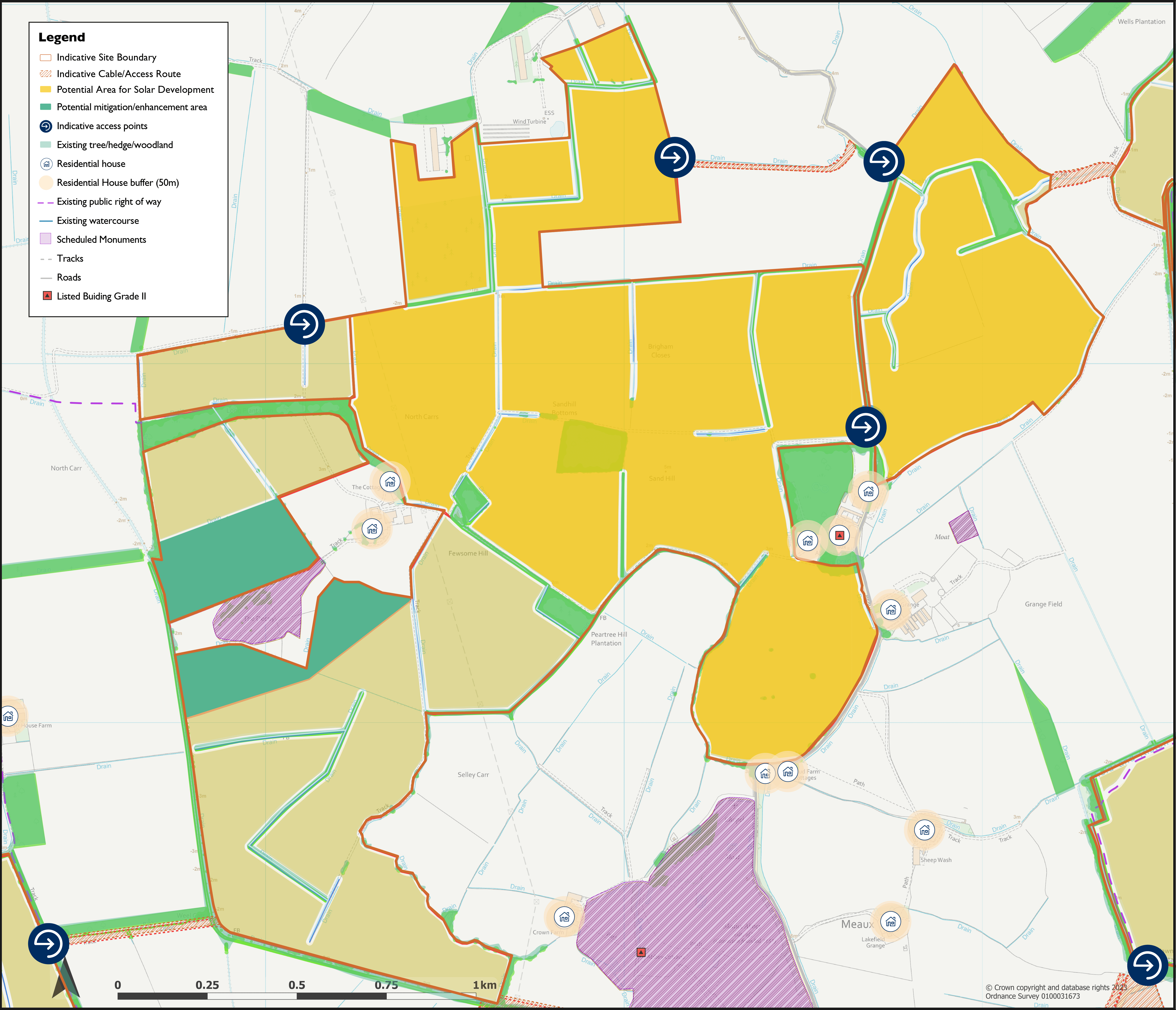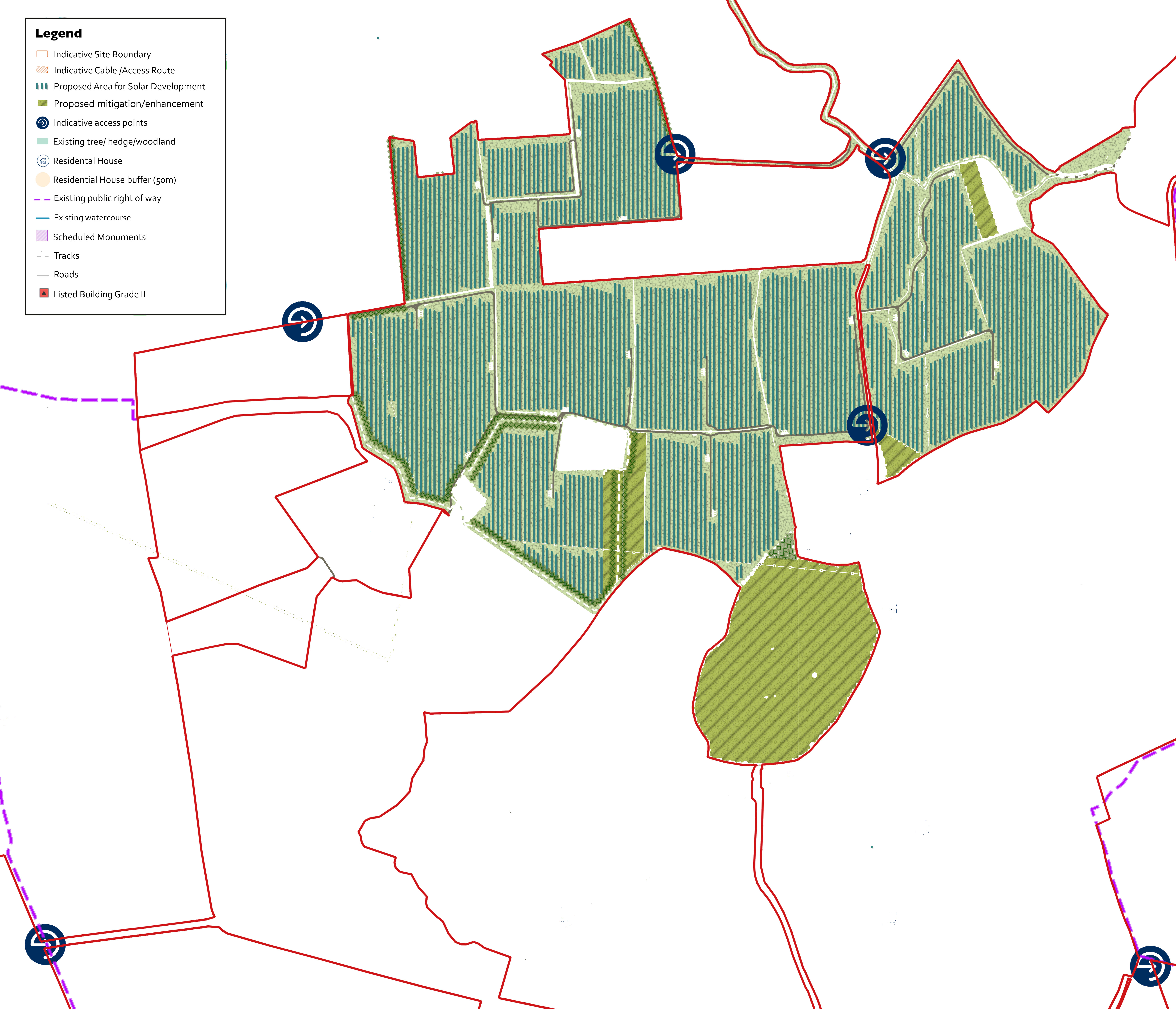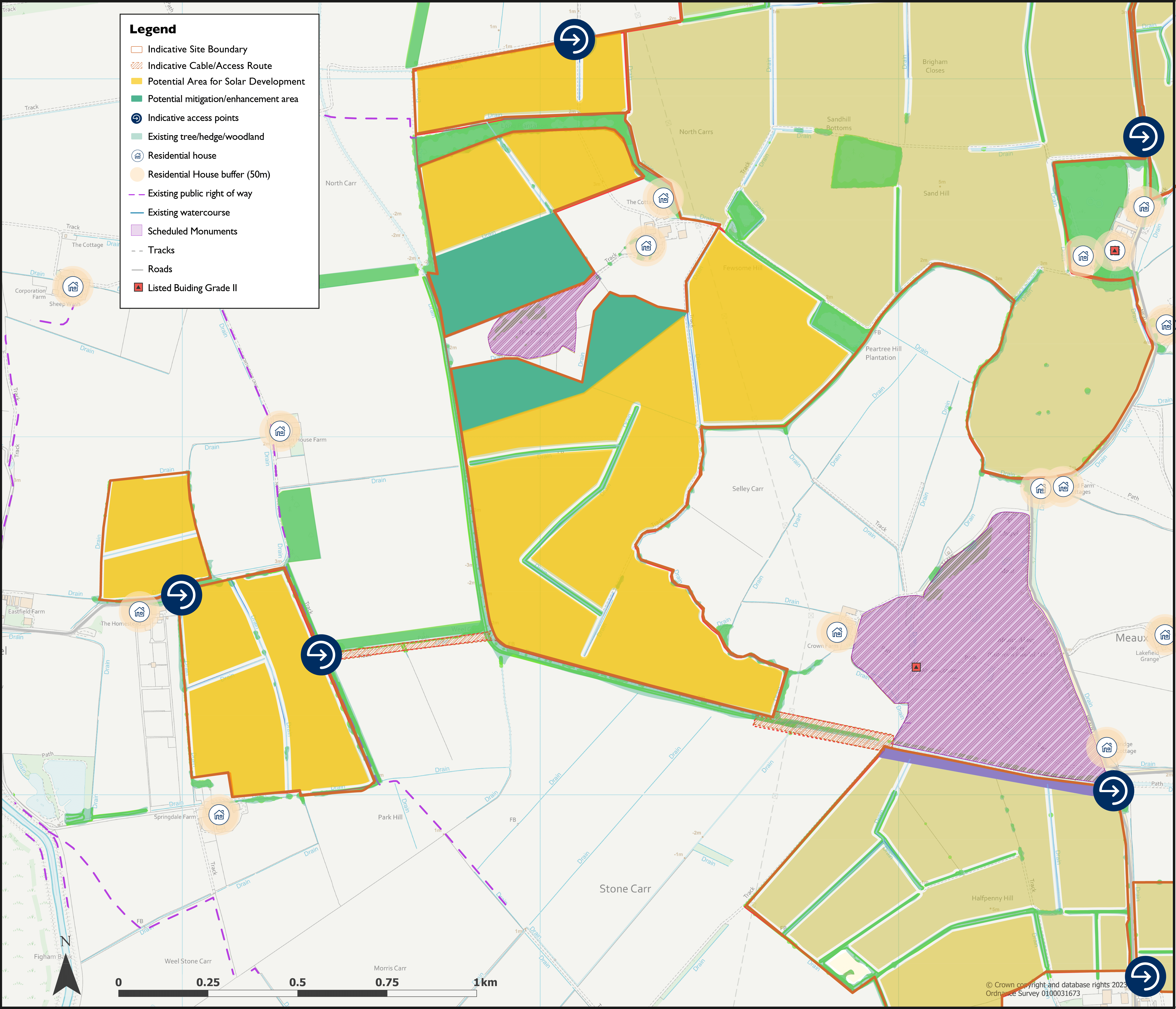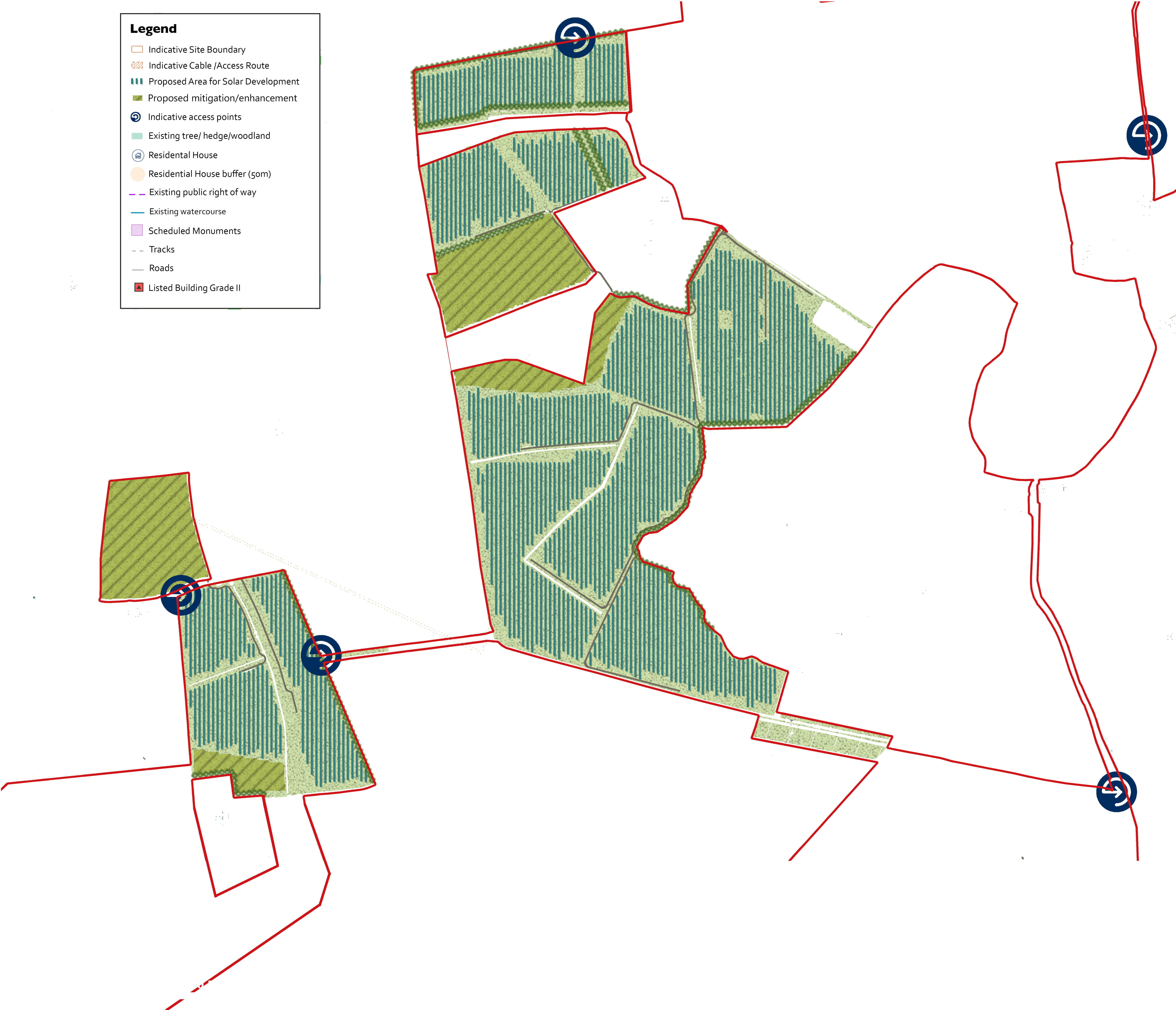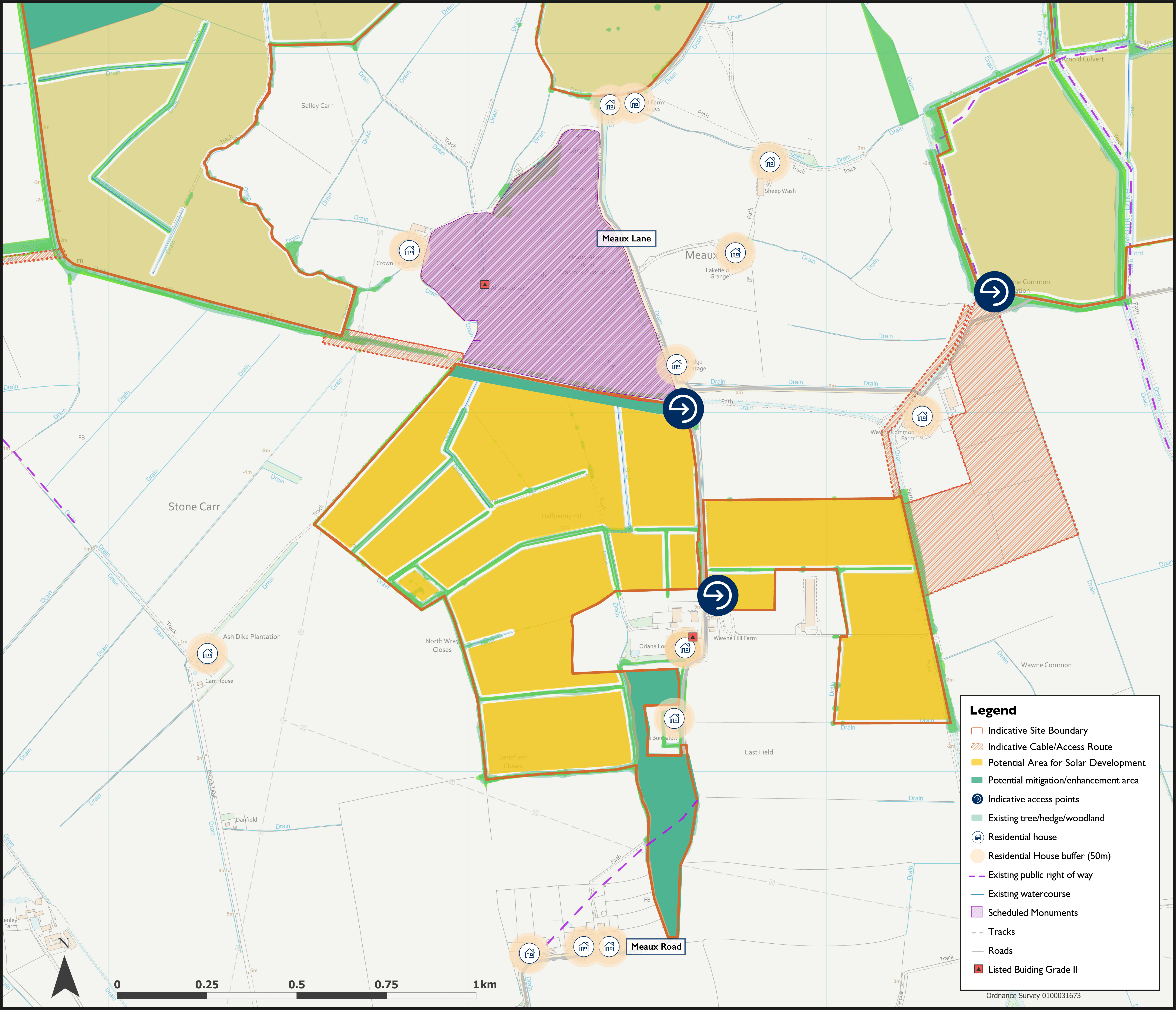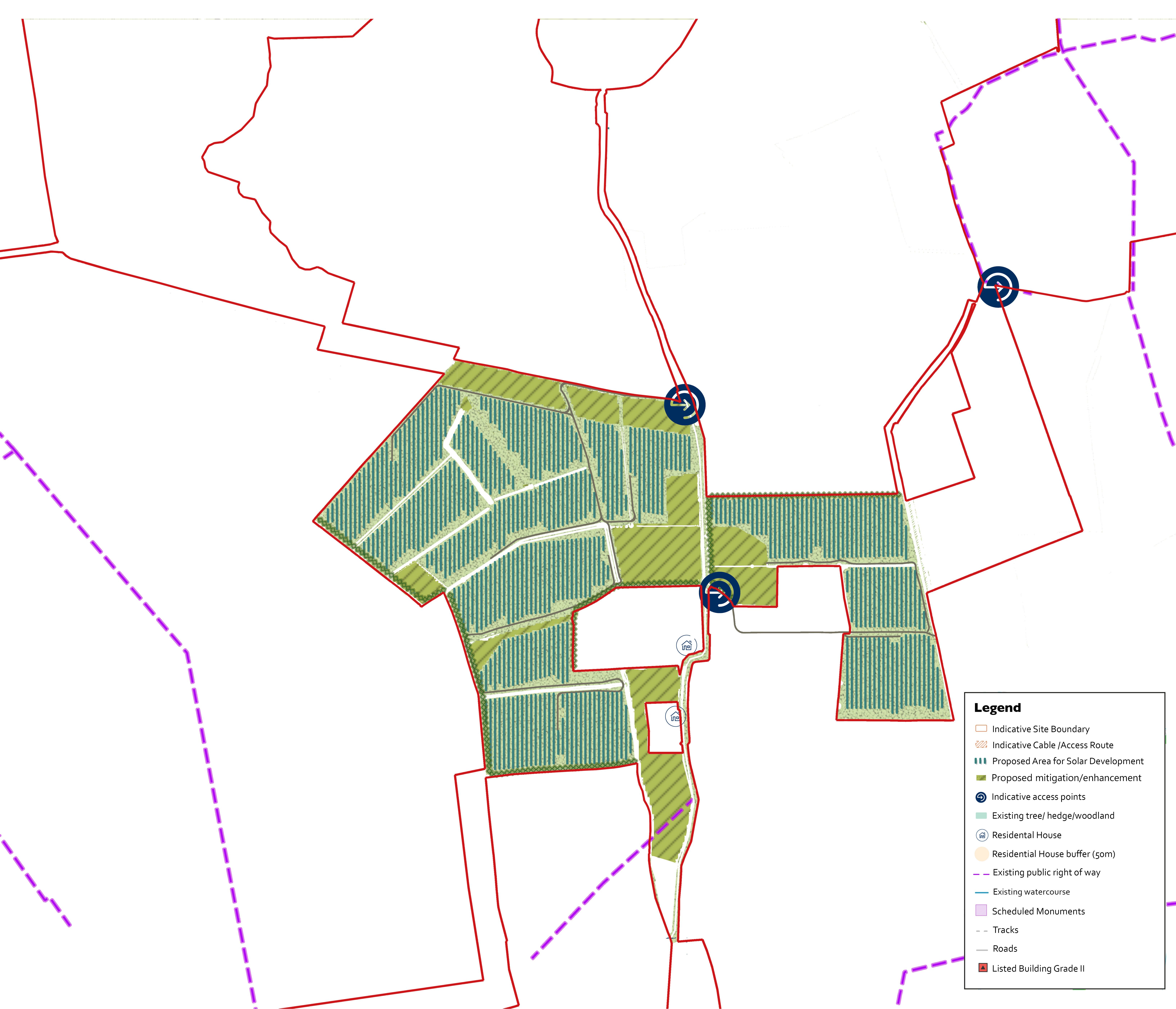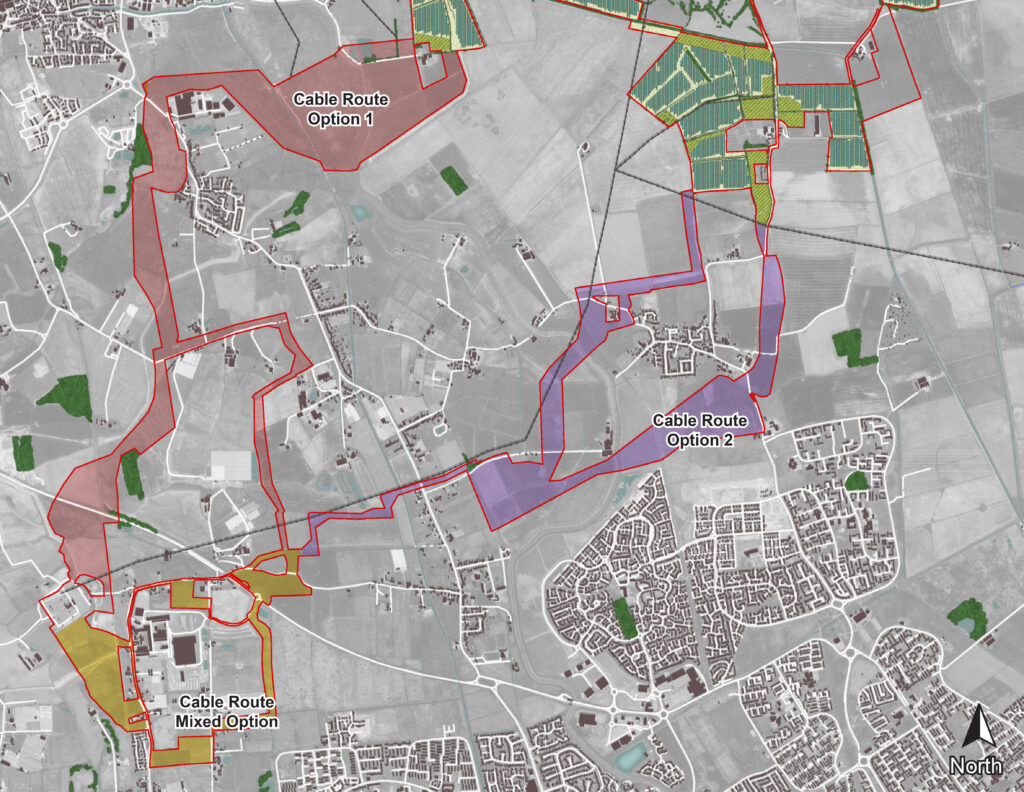Our Proposals For Peartree Hill
Peartree Hill is made up of several areas of land (currently named Land Areas A-F), with the areas being connected by a series of underground cables. Peartree Hill will establish a grid connection via underground cables to the Creyke Beck Substation, which will transfer the electricity to the national electricity network.
The most northern part of the site is located northwest of Leven, with the remainder of the site to be located on land between the villages of Tickton, Riston, Wawne, Weel and Woodmansey.
Anticipated to generate 320MW of clean energy, Peartree Hill is classed as a nationally significant infrastructure project (NSIP) due to its scale. As such, the project will proceed through the Development Consent Order (DCO) planning process. The final decision on whether to grant consent for the project will be made by the Secretary of State for the Department for Energy Security and Net Zero.
More information about our proposals can be found on the documents page.
Proposals at a glance

Supporting the UK’s net zero targets by displacing over 11,400,000 tonnes of CO2 from equivalent fossil fuel energy – that equates to taking c. 166,000 cars off the road for a year.

Contributing 320MW of clean electricity to the national grid, enough to power the equivalent of approximately 167,000 homes – that’s more than every home in Hull!

Battery Energy Storage Systems (BESS) on-site, ensuring the solar farm can be as flexible as possible in delivering energy to the grid.

Over 95% of the solar panel areas can be made available for sheep grazing, retaining an agricultural use and allowing topsoil to recover, by increasing soil organic matter and improving the soil structure.

Up to 15km of proposed new hedgerows and trees, including a mix of mature and semi-mature tree planting to futher improve visual screening and habitat creation.

Over 50% Biodiversity Net Gain (BNG) to be delivered on-site, providing new and improved habitats, such as wildflower meadows, grassland areas, bird and bat nesting boxes and beehives.

Providing additional opportunities for public recreation, with up to 7km of proposed new permissive paths across the site, outdoor picnic areas and classrooms, new signage, benches and community orchards.

RWE will provide a community benefit fund of up to £4.2 million to support local community groups and initiatives.

Around £18.5 million generated in business rates over the lifetime of Peartree Hill, to be used by East Riding of Yorkshire Council to fund important local services.

Educational opportunities introduced across the site, including an outdoor classroom area, information boards and ecducational trails, providing information features and renewable energy generation.
Components of Peartree Hill Solar Farm
Peartree Hill would include the below necessary components, along with a range of environmental mitigation and enhancements, as well as new community assets.
Solar panels and associated mounting structures
- Solar panels harness the sun’s rays and convert them into electricity. The panels proposed would reach a maximum height of 3.5m and will be made of a frame (typically aluminium), glass, crystalline silicon solar cells, and copper wiring, all of which can be extracted, separated, and recycled or reused.
Battery Energy Storage System (BESS)
- Battery storage is an integral component of renewable energy technologies, storing excess energy during periods of peak generation or low demand and releasing it during peak demand or in case of power outages. This safe and proven technology would support Peartree Hill to generate a consistent and reliable renewably generated power supply, even when the sun is not shining.
Other infrastructure
- On-site supporting equipment including inverters, transformers, and switchgears.
- Two on-site substations to connect the solar panels to the electricity network.
- Underground cabling connecting solar panel areas to the on-site substations, to other Land Areas and to Creyke Beck Substation.
- Supporting infrastructure including access tracks, security measures, gates and fencing, lighting, drainage infrastructure and storage containers.
- Highways works to enable construction for example, additional passing places.
You said, we did!
Over 100 responses were received from the local community during our non-statutory consultation in August 2023, all of which have been considered and responded to as part of our non-statutory consultation report, published in January 2024.
This community feedback, along with the findings from our ongoing environmental and technical assessments and surveys, have helped to refine our proposals for Peartree Hill Solar Farm. On the below table, you can see how our feedback has already helped to shape the design of Peartree Hill.
| You said | We did! |
| We received comments regarding the size of the Land Areas presented at non-statutory consultation and concerns regarding potential visual impact | Within the Land Areas, we have reduced the area proposed for solar panels, and associated infrastructure. This has enabled the addition of appropriate buffers to homes, villages and assets closest to the site. Specifically: – Land Area A: increased the environmental mitigation and enhancement area in the northern part of the Land Area, which also minimises potential impacts on identified below-ground archaeology. – Land Area B: removed an area (0.44 hectares) in the southern part of Land Area B from being solar development. – Land Area C: set back solar areas to reduce visual impact on local properties. – Land Area D: set back solar areas to reduce visual impact on local properties and removed solar panels near Meaux Deserted Medieval Village to protect its setting. – Land Area E: removed two fields from solar development to be used for ecological mitigation and enhancement, reducing the impact on nearby properties. – Land Area F: removed solar panels from areas to avoid impacting below-ground archaeology. |
| We received comments on land use and ensuring impacts on ecology are mitigated. | We have increased the areas that are proposed for ecological mitigation, ecological enhancement and land retained for agricultural use. Together, these non-solar areas now make up 10.2% of the total site. Our illustrative masterplan includes proposed locations for outdoor classrooms, wildflower meadows and amenity spaces. |
| We received comments about the visual impact of the solar farm. | We have progressed our plans to include new planting across the site to screen views of solar infrastructure from residential areas, roads and footpaths. |
| We received comments outlining the desire for Peartree Hill to include public rights of way, bridleways and new permissive paths (a route which can be used by the public during the lifetime of the project, but will not become a permanent right of way). | We have progressed our plans to include new permissive paths, which could provide up to 7km of new walking routes, whilst also exploring opportunities for horse riders in some areas. We are seeking feedback on our proposed permissive path routes as part of this consultation. |
| We received comments outlining the importance of locating battery energy storage and on-site substations with consideration to location, visibility and noise. | We have progressed site configuration to consider siting the two on-site substations in Land Areas C and E, alongside battery storage. Please see illustrative masterplan. We will be undertaking further noise assessments to inform the mitigation and screening required to minimise likely significant effects regarding local noise. |
Take a closer look at each of the Land Areas (A-F)
Please use the slider to compare the plans presented at non-statutory consultation and statutory consultation.
Contact us
To contact the project team you can:
info@peartreehillsolar.co.uk
01482 695 004
Freepost PEARTREEHILL SOLAR FARM
or follow us on Facebook for regular updates
